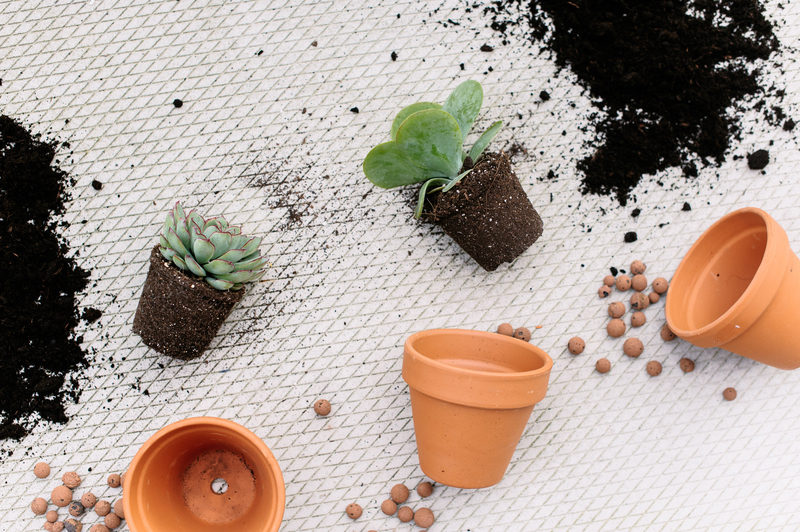Ultimate Guide for Tenants: End of Tenancy House Cleaning
Posted on 15/09/2025
Ultimate Guide for Tenants: End of Tenancy House Cleaning
Moving out of a rented property can be a stressful process, especially when it comes to end of tenancy house cleaning. Most landlords and letting agents require the home to be spotless before you hand back the keys, or you may risk losing part or all of your deposit. Understanding the intricacies of move out cleaning can save you time, money, and unnecessary disputes. This comprehensive guide for tenants will cover everything you need to know about end of tenancy cleaning, from legal responsibilities to thorough checklists, helpful tips, and professional options.

What is End of Tenancy Cleaning?
End of tenancy house cleaning refers to the deep cleaning required by tenants before vacating a rental property. The goal is to return the home in a "like new" state, ensuring every nook and cranny is cleaned to the highest standard.
- Move out cleaning ensures the landlord or new tenants receive a fresh, hygienic space.
- Landlords and letting agents often conduct detailed inspections using check-in and check-out inventories.
- If the property is not cleaned to standard, you risk deductions from your tenancy deposit.
Why is Move Out Cleaning Important?
Thorough end of tenancy cleaning has significant benefits:
- Maximise your deposit return: Most disputes arise from cleanliness issues.
- Maintain a good rental history: Landlords are more likely to provide positive references.
- Legal requirements: Many tenancy agreements demand deep cleaning upon leaving.
Your Legal Obligations as a Tenant
Under UK law and most tenancy agreements worldwide, cleaning at the end of your lease is a tenant's responsibility. You must restore the property to the same condition (excluding fair wear and tear) as when you moved in.
- Check your tenancy agreement: Review what's expected in terms of cleanliness.
- Inventory checks: Compare the property's current state against the original inventory report.
- Fair wear and tear: General ageing or reasonable use is allowed, but ingrained dirt or neglect is not.
How Clean Does the Property Need to Be?
The property should be as clean as when you moved in. This means:
- Floors, carpets, and surfaces are free from stains and debris.
- Kitchens and bathrooms are sanitised and odour-free.
- No dust, grime, or grease on skirting boards, light fittings, or appliances.
- Windows (inside) should be crystal clear.
Landlords will check everywhere, including commonly missed spots like behind furniture and inside cupboards. Attention to detail is vital to avoid disputes over your security deposit.
Comprehensive End of Tenancy Cleaning Checklist
Use this ultimate checklist to guide your cleaning and ensure nothing is missed:
General Living Areas
- Dust and wipe all surfaces, shelves, and ledges.
- Vacuum and mop all floors, including corners.
- Remove cobwebs from ceilings and corners.
- Clean skirting boards, doors, and door frames.
- Polish mirrors, glass, and any decorative surfaces.
- Wipe radiator panels and behind radiators.
- Empty and clean bins.
Bedroom Cleaning
- Dust and clean inside wardrobes, drawers, and cupboards.
- Vacuum and, if necessary, clean mattresses.
- Clean light switches, lamps, and sockets.
- Polish handles and fixtures.
Kitchen Deep Clean
- Degrease and clean all worktops, counters, and splashbacks.
- Scrub sinks, taps, and drains to remove limescale and stains.
- Empty, defrost, and clean the fridge and freezer (leave doors open once cleaned).
- Clean inside and outside of all cabinets and drawers.
- Wash oven trays, racks, and deep clean inside the oven and hob.
- Clean extractor fan, filter, and light fittings.
- Sanitise microwave, dishwasher, washing machine, and other appliances.
Bathroom Cleaning
- Disinfect toilet, seat, cistern, and flush handle.
- Scrub bath, shower screen, tiles, and grouting to eliminate mould and soap scum.
- Polish taps and hardware to a streak-free shine.
- Clean mirrors and windows.
- Wipe down extractor fans and replace filters if possible.
- Wash floors and replace toilet brush if needed.
Other Areas
- Clean windows, window sills, and window frames (interior side).
- Wipe balustrades, banisters, and staircases.
- Remove pet hair, odours, and stains from all surfaces.
- Check outside spaces (if relevant) - sweep patios, empty bins, and tidy gardens.
Tips for Successful End of Tenancy Cleaning
- Start Early: Plan your tasks and give yourself plenty of time.
- Use Professional-Grade Cleaning Products: For tough dirt, limescale, and grease, invest in quality supplies.
- Work Top-to-Bottom: Clean high areas first so dirt falls onto uncleaned surfaces.
- Don't Forget the Details: Clean inside washing machines, ovens, window ledges, and plugholes.
- Document Your Cleaning: Take dated before-and-after photos as proof of condition.
Should You Hire a Professional End of Tenancy Cleaning Service?
Many tenants debate whether to hire a professional cleaning company or tackle the job themselves. Here's what you should consider:
- Time and Effort: A thorough end of tenancy clean can take 6-12 hours or more, depending on property size.
- Guaranteed Results: Many professional end of tenancy cleaners offer guarantees, so if your landlord isn't happy, they'll re-clean for free.
- Equipment: Experts use commercial-grade tools that achieve better results, especially for oven, carpet, and upholstery cleaning.
- Deposit Protection: Letting agents often prefer a receipt or certificate from a cleaning service as proof the job was done to standard.
Note: Some tenancy agreements require a professional clean for carpets or appliances, especially if you had pets or smokers.
Choosing a Reputable Cleaning Service
- Read online reviews and check ratings for reliability and effectiveness.
- Ensure the company is insured and experienced specifically in end of tenancy cleaning.
- Request a checklist of tasks included in their package and ask about their deposit return guarantee.
DIY End of Tenancy Cleaning - Step-By-Step
If you opt to clean the property yourself, follow these simple steps for a complete move out cleaning:
- De-Clutter: Remove all personal belongings and rubbish from the property.
- Dry Clean or Wash Carpets: Use carpet cleaners or arrange professional cleaning if stained.
- Wash Windows: Use specialist products for streak-free glass.
- Clean Room-by-Room: Refer to the checklist above, focusing on kitchens and bathrooms as these are scrutinised most.
- Pay Special Attention to Appliances: Scrub ovens, fridges, microwaves, and washing machines inside and out.
- Wipe Walls and Doors: Remove any scuffs, fingerprints, and marks. Fill any small holes with filler if necessary.
- Finishing Touch: Run a quick vacuum and mop the floors once all other tasks are complete.
Common End of Tenancy Cleaning Mistakes to Avoid
- Leaving the Cleaning Too Late: Rushing can mean missing important areas, leading to disputes.
- Forgetting Hidden Spots: Remember to clean behind and under furniture, inside appliances, and on top of cupboards.
- Not Cleaning Carpets or Upholstery: Stains or pet hair are a top reason for deposit deductions.
- Ignoring Inventory Reports: Always cross-reference your clean with the check-in report for accuracy.
- Overlooking Odours: Smoke, food, or pet smells need to be completely removed, not just masked with air fresheners.
How to Handle Disputes Over Cleaning
- Use photos or video evidence to prove the condition you left the property in.
- Request a copy of the landlord's cleaning invoice if money is deducted for cleaning.
- Appeal to your tenancy deposit protection scheme (like DPS or TDS in the UK) with evidence if you feel a deduction is unfair.

End of Tenancy Cleaning: Frequently Asked Questions (FAQ)
How Long Does End of Tenancy Cleaning Take?
End of tenancy house cleaning can take anywhere from 6 to 12 hours, or even longer for large properties or those in poor condition. Professional teams generally work faster and in teams.
What's the Difference Between Regular Cleaning and End of Tenancy Cleaning?
Regular cleaning involves basic tasks like vacuuming and dusting, while move out deep cleaning is a thorough, top-to-bottom clean that includes interiors, appliances, and hard-to-reach areas.
Are Tenants Required to Hire Professional Cleaners?
Not always. Unless your lease specifically requires a professional cleaning, you can do the work yourself. However, the result must meet the standard set at the start of the tenancy.
Do I Have to Clean Carpets and Ovens?
Yes, unless your check-in inventory shows they were not clean when you moved in. These are areas landlords and agents scrutinise most.
Conclusion: Secure Your Deposit with Spotless End of Tenancy Cleaning
With careful planning and attention to detail, you can leave your rented property sparkling clean -- ensuring a smooth move-out and protecting your full deposit. Whether you choose to DIY or hire an end of tenancy cleaning service, use the tips and checklists in this ultimate guide to avoid common pitfalls.
Remember: End of tenancy house cleaning isn't just a formality -- it's essential for a stress-free move and positive landlord reference. Invest the right effort at the end, and you'll start your next chapter on the best possible terms.
```







